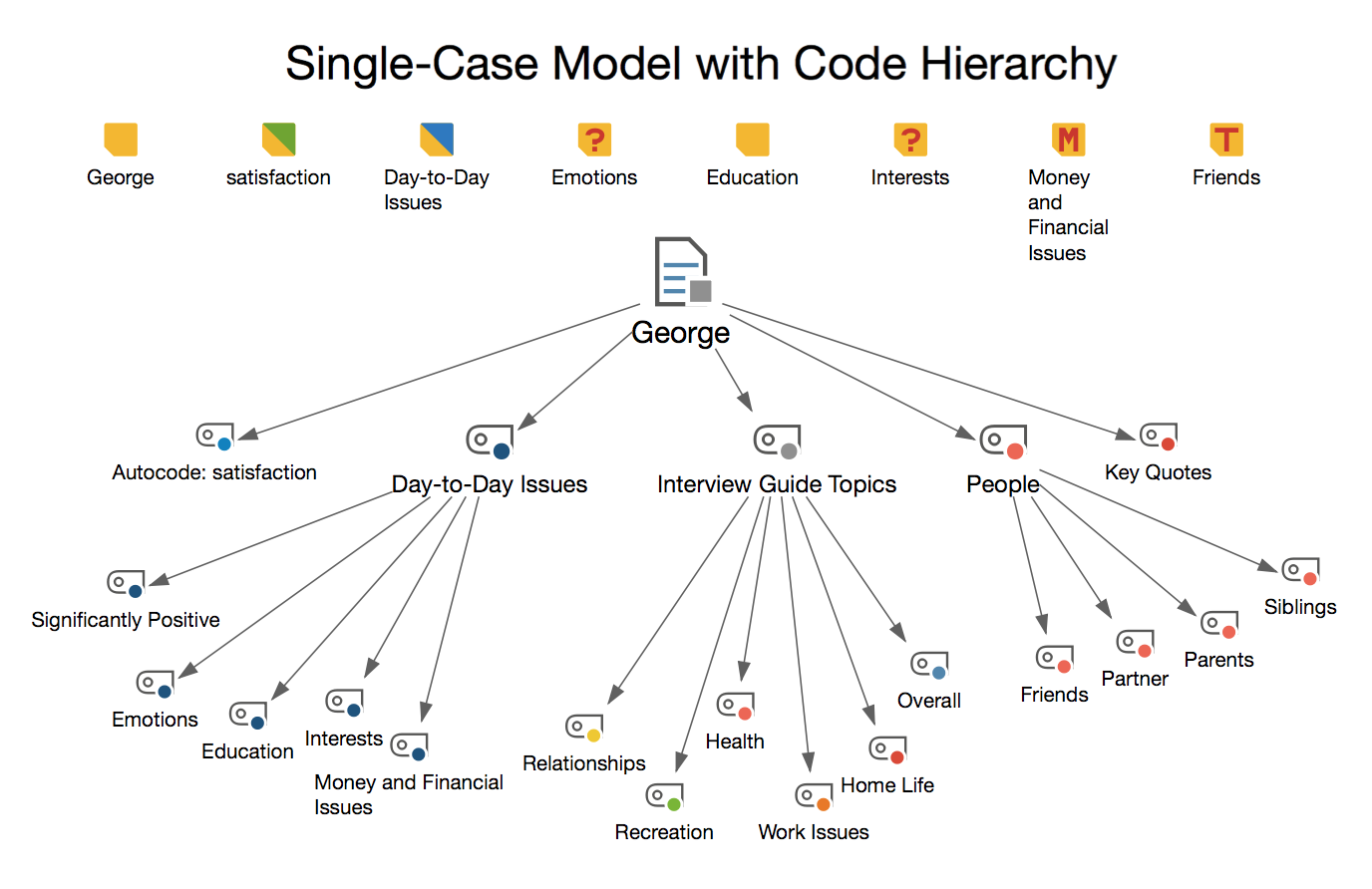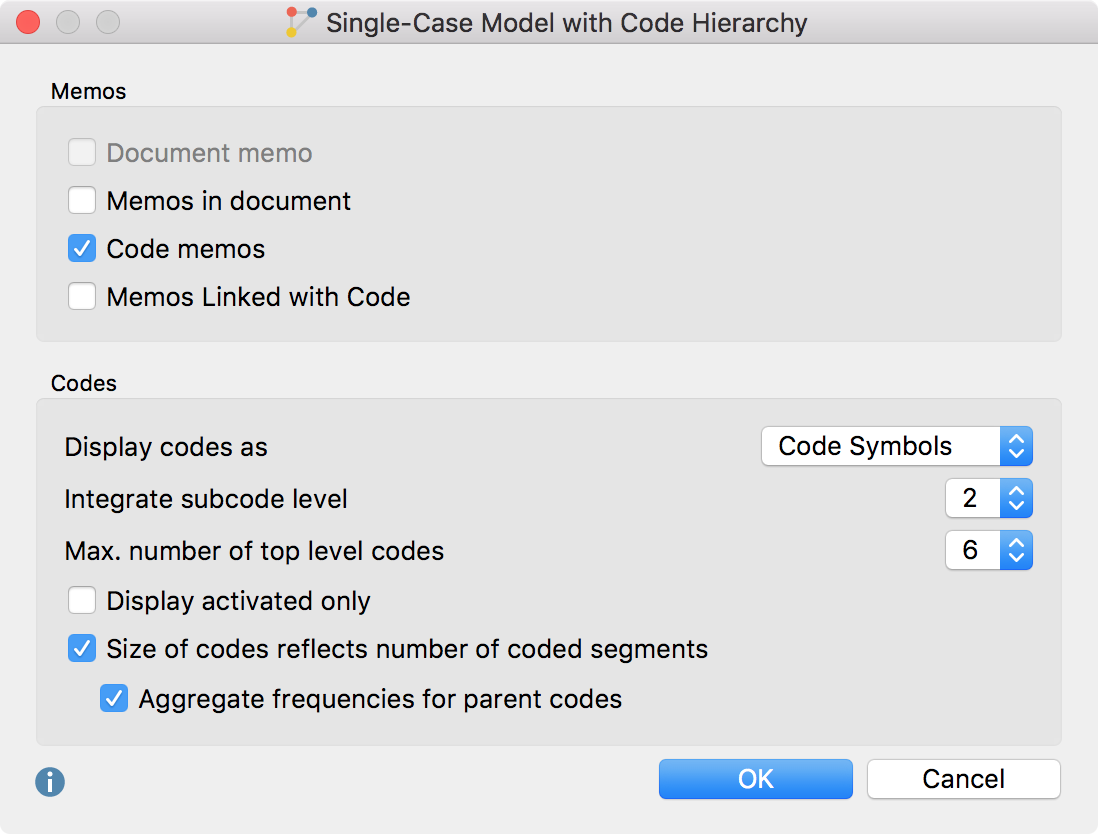Function of this model
As with the normal Case Model, a case in the form of a document, a document group or a document set is the focus of this model template. Unlike the normal single case model, however, the codes used in the case are not arranged in a circle around the case, but from top to bottom while maintaining their hierarchy. No codings are shown in this model.
Presentation in the map
This then looks like as in the following figure. The hierarchy of codes is symbolized by arrows: A code pointed to by an arrow represents a subcode of the code at which the arrow starts.

Create a new model and determining the structure
After opening a since case with a code hierarchy via the New Model menu in the Start tab, drag a document, a document group or a document set from the "Document System" into the map. The following options dialog window will appear:

Memos - This lets you decide which memos to integrate: The associated memo from the "Document System" (document memo), the memos assigned to documents evaluated in the cases, the memos of the codes assigned to the case, and memos linked to any such code.
Display codes as - The symbols can be displayed as circles or as code symbols in the map. The display of the codes can be subsequently changed via the Properties window.
Integrate subcode level (1, 2 or 3) - Here you can set how many hierarchical levels of the code system should be taken into account. 1 means: Only the top-level codes should be included; 2 means: their subcodes should also be displayed.
Max. Number of top level codes (5-10) - Specify the maximum number of top-level codes to display here. MAXMaps selects the codes with the most coded segments for the display - for codes of the same frequency the code higher up in the code system will be given preference.
Display activated only - Only the codes from the code system that are currently activated are considered.
Size ... number of coded segments - Select this option to make codes with many coded segments larger than codes with few segments. MAXMap uses three different sizes for this style of code representation: codes whose frequencies are in the range of one standard deviation around the mean are displayed in a medium size. Codes with more or less coded segments receive a larger or smaller symbol. If the code frequencies are close together, MAXMaps uses only the smallest or smallest together with the average symbol size.
As a rule, the Aggregate frequencies for parent codes option will be enabled so that the frequencies of the subcodes are taken into account when determining the size of the codes above. Otherwise, it may be that the subcodes are displayed much larger than their top codes, because the top codes were used very rarely or not at all.
